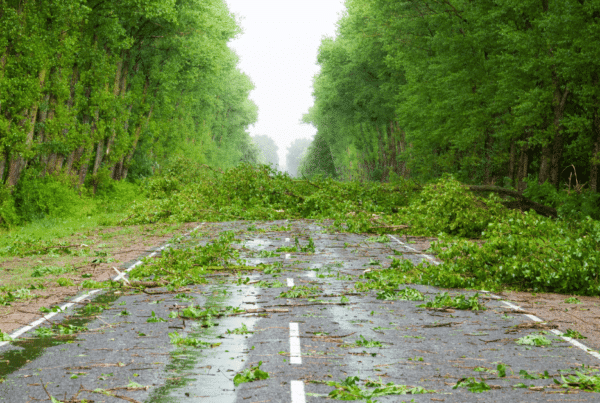Sustainability in Travel: Let’s Unpack the Suitcase of Definitions Together & How You Can Support It

This is an ecotourism destination, which is a form of travel that focuses on exploring natural environments while minimizing the negative impact on the ecosystem and supporting conservation efforts.
Did you know that according to the International Energy Agency, tourism is responsible for about 8% of global greenhouse gas emissions? In a world where the allure of wanderlust often clashes with environmental concerns, the concept of sustainable travel has emerged as a beacon of hope. But what does travel sustainability truly mean? And how can individuals and businesses alike embark on journeys that leave a positive impact on the planet? Join us as we delve into the realm of sustainable travel, exploring its essence, practices, and a simple tool to get your started.
What does “travel sustainable” mean?
Imagine a journey where every step you take leaves a legacy of conservation and community empowerment. Sustainable travel is precisely that—a conscious decision to tread lightly on the planet while immersing yourself in the rich tapestry of local cultures and landscapes. It encompasses various aspects, including reducing carbon emissions, conserving natural resources, minimizing plastic consumption, and beyond. In essence, sustainable travel is about embracing the beauty of our planet while taking meaningful action to protect it for generations to come.
Understanding Unsustainable Travel
While sustainable travel offers a path towards responsible exploration, it’s essential to recognize the flip side of the coin: unsustainable travel practices that exacerbate environmental degradation and disrupt local communities. Let’s delve into what unsustainable travel looks like and examine specific examples:
Excessive Carbon Emissions:
One of the most significant contributors to unsustainable travel is the excessive carbon emissions generated by transportation, particularly air travel. Each flight emits a substantial amount of greenhouse gases, contributing to climate change and environmental degradation. For example, a round-trip flight from New York to London generates approximately 2.5 metric tons of CO2 per passenger. Multiply that by millions of flights annually, and the environmental impact becomes staggering.
Overtourism:
Overtourism occurs when popular destinations experience an overwhelming influx of tourists, leading to overcrowding, environmental degradation, and cultural commodification. Specific examples include:
-
- 📍Plitvice Lakes National Park, Croatia: Plitvice Lakes National Park, known for its stunning cascading waterfalls and turquoise lakes, has experienced environmental degradation due to overtourism. Increased visitor numbers have led to trampling of vegetation, erosion of trails, and pollution of water bodies, jeopardizing the park’s natural beauty and ecological integrity.
Plitvice Lakes – the reality of overtourism. Crowds of visitors who are unknowingly causing damage to the delicate ecosystem by stepping on a travertine barriers, swimming in the lakes, etc.
- 📍 Phi Phi Islands, Thailand: The Phi Phi Islands, particularly Maya Bay on Phi Phi Leh, experienced severe environmental degradation due to decades of overtourism. The bay became overcrowded with tourists attracted by its pristine beaches and crystal-clear waters, leading to damage to coral reefs and marine ecosystems. In response, authorities closed Maya Bay indefinitely to allow for ecosystem recovery.
- 📍Plitvice Lakes National Park, Croatia: Plitvice Lakes National Park, known for its stunning cascading waterfalls and turquoise lakes, has experienced environmental degradation due to overtourism. Increased visitor numbers have led to trampling of vegetation, erosion of trails, and pollution of water bodies, jeopardizing the park’s natural beauty and ecological integrity.

Standing room only at overcrowded Maya Bay beach: Photo: Thon Thamrongnawasawat
-
- 📍Mount Everest, Nepal: Mount Everest, the world’s highest peak (or world’s highest dumping ground), has faced environmental degradation due to overtourism and mountaineering expeditions. The mountain’s base camps and climbing routes have become littered with waste, including discarded oxygen cylinders, tents, and human waste, posing a significant threat to the fragile Himalayan ecosystem.

Trash and tents on Mount Everest. Mountaineers leave behind oxygen bottles, torn tents, broken ladders, cans, wrappers, and human waste.
Wildlife Exploitation:
Tourism-driven activities can lead to exploitation and harm to wildlife, undermining conservation efforts and threatening endangered species. Notable examples include:
-
- Elephant trekking in Southeast Asia, where elephants are often mistreated and subjected to cruel training methods to cater to tourist demand for rides and entertainment.
- Sea turtle nesting sites in Costa Rica, where unregulated tourism activities disrupt nesting behaviors and contribute to the decline of sea turtle populations.

Costa Rica is one of the most important areas in the world for sea turtle nesting. But tourism has reached a tipping point.
Community Impact & Cultural Appropriation:
Unsustainable travel can strain local communities by disrupting dynamics and driving cultural appropriation, where local traditions and customs are commodified for tourist consumption, often at the expense of indigenous communities. Examples include:
-
- Unsustainable tourism can increase living costs, making housing unaffordable for residents.
- Souvenir shops selling mass-produced goods marketed as authentic cultural artifacts, perpetuating stereotypes and undermining local artisans’ livelihoods.
- Traditional ceremonies and rituals in indigenous communities being commercialized for tourist entertainment, stripping them of their cultural significance and authenticity.

Art is an integral part of Indigenous cultures: but that art is threatened by cultural appropriation
In sum, unstainable travel perpetuates a cycle of environmental degradation, wildlife exploitation, and local community disruption. By recognizing these pitfalls and making informed choices, travelers can strive to minimize their negative impact and contribute to a more sustainable and ethical tourism industry.
Here Are 5 Sustainable Travel Tips
- Choose Eco-Friendly Accommodations: Opt for hotels and lodges committed to sustainability, minimizing waste, and conserving resources.
- Pack Light and Smart: Pack reusable items, such as water bottles and shopping bags, to minimize waste and carbon emissions associated with excess luggage.
- Support Local Communities: Embrace local culture by dining at locally-owned restaurants, purchasing handmade souvenirs from artisans, and participating in community-based tours.
- Use Sustainable Transportation: Utilize public transport, cycling, or walking whenever possible to reduce reliance on fossil fuels.
- Offset Your Carbon Footprint: Purchase carbon offsets for flights and travel to compensate for unavoidable emissions, supporting conservation projects.
Measuring and Offsetting Your Travel Footprint
At Stand ForTrees, we understand that every journey leaves a footprint. That’s why we’ve developed a travel calculator that allows individuals and businesses to measure the carbon emissions associated with their travel activities and offset them through investments in forest conservation projects. By supporting projects that protect and restore critical forest ecosystems, travelers can mitigate the environmental impact of their journeys and contribute to a more sustainable future for our planet.
Let’s consider the travel footprint of a hypothetical traveler, Sarah, embarking on a journey from New York City to Bali, Indonesia:
- Flight from New York to Bali: Sarah’s flight from New York to Bali generates a significant amount of carbon emissions due to the long distance traveled and the fuel consumption of the aircraft. Using our travel calculator, Sarah can estimate the carbon footprint of her flight based on factors such as cabin class. Flying from Albany International to Bali International and back in economy would come out to 3.26 metric tons of carbon emissions.
- Local Transportation in Bali: Upon arrival in Bali, Sarah may use local transportation such as taxis, buses, or rideshare services to reach her accommodation and explore the island. While these modes of transport may have a lower environmental impact compared to flying, they still contribute to her overall travel footprint. For her 20 miles by motorbike and 100 miles by average car, she would be responsible for 0.33 metric tons of carbon emissions.
- Accommodation: Sarah stays at a hotel in Bali, which is part of energy consumption, waste generation, and resource utilization. For her 7 nights in Bali, that would generate around 0.51 metric tons of carbon emissions.
After using our travel footprint tool, Sarah discovers that her journey has resulted in a total of 4.1 metric tonnes of carbon emissions. Rather than feeling disheartened, Sarah sees this as an opportunity to take meaningful action.With the help of Stand For Trees, Sarah can offset her trip immediately through one of our incredible carbon offset projects. These projects play a vital role in forest conservation, protecting and restoring critical ecosystems around the globe. Her decision to offset her travel footprint demonstrates her commitment to making a positive difference in the world.
Join Sarah and countless other travelers in supporting forest conservation initiatives through Stand For Trees. Together, we can create a more sustainable future for our planet. Click below.
In conclusion, sustainable travel is not just a trend—it’s a commitment to safeguarding the planet for future generations. By embracing eco-friendly practices, supporting local communities, and offsetting our carbon footprints, we can travel the world with a conscience, knowing that our adventures leave a positive legacy for the Earth and its inhabitants. Join us in standing for trees and embracing the transformative power of sustainable travel.











